The Path to Enhanced Sustainability: Regenerative Agriculture and The
Malaysian Palm Oil Industry
Journey through the evolution of sustainability in the Malaysian palm oil industry as regenerative agriculture emerges as a transformative force.
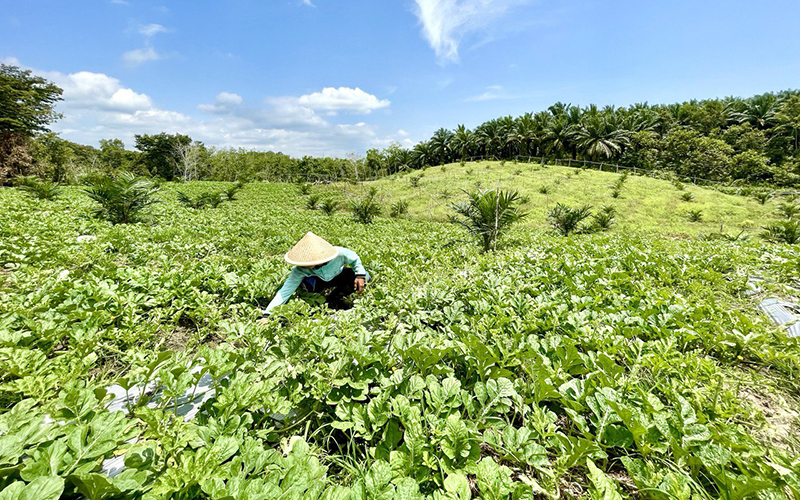
Intercropping in immature oil palm, an important regenerative agriculture practice in smallholdings.
A recent paper by C. H. Teoh found that the global agricultural landscape is experiencing a paradigm shift, transitioning from conventional practices to more sustainable and regenerative approaches. This move addresses the pressing issues of soil degradation, biodiversity loss, and climate change.
The global market, especially in Europe, has been demanding that food production be done sustainably. With regard to palm oil, it is widely recognised as Certified Sustainable Palm Oil (CSPO). However, there is a rising trend towards embracing regenerative agriculture, which is considered to be an even more sustainable method. Major Fast-Moving Consumer Goods (FMCG) companies have embraced regenerative agriculture and have made public commitments to source only regeneratively produced raw materials. As palm oil is a key raw material for many FMCGs, companies could require palm oil to be produced using regenerative agriculture methods as part of their sourcing policy.
This article explores the relevance of regenerative agriculture to oil palm, its potential impacts and benefits on oil palm plantations, and how it intertwines with existing sustainable practices such as the Malaysian Sustainable Palm Oil (MSPO) standard.
A Holistic Approach
Over the past two decades, the palm oil industry has faced increasing demands for sustainability and traceability from "farm to fork". In response, certification schemes like the MSPO national scheme have emerged. Regenerative agriculture is not a new concept, and it has been associated with organic farming since the 1980s. Although there is no universal definition of regenerative agriculture, the core principles commonly adopted by FMCGs include soil and soil health, water, biodiversity, climate resilience, and integration with livestock.
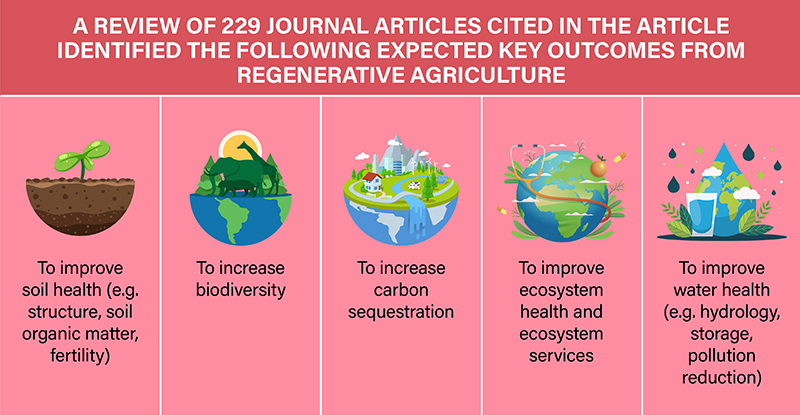
Relevance to Oil Palm
Over the years, the oil palm industry has developed and implemented many best management practices (BMPs) for sustainable production, which have been incorporated into certification requirements, such as the MSPO standard. The article assessed the impact of various BMPs against the core principles for regenerative agriculture regarding soil and soil health, water, biodiversity, and climate mitigation. Overall, there is a strong alignment between sustainable agriculture and regenerative agriculture practices.
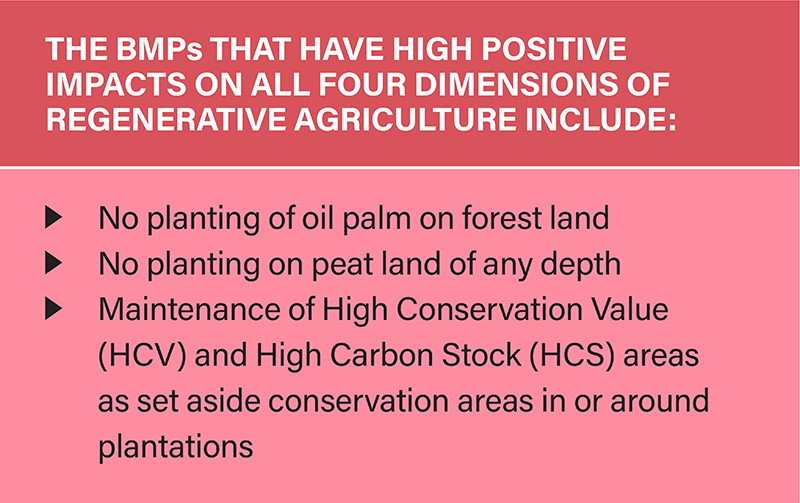
Key Focus Areas: Aligning Regenerative Agriculture in the Palm Oil Industry
1. Soil and soil health
The importance of maintaining soil health cannot be overemphasised, especially in perennial crops like oil palm, which has an economic life cycle of about 25 years and are usually replanted with the same crop. Among soil management practices, the planting of leguminous cover crops and the application of empty fruit bunches (EFB) as organic mulch must be perpetuated.
2. Leguminous cover crop
Planting legume cover crops protects exposed soil surfaces during the oil palm establishment phase. Legumes also return considerable amounts of organic matter from the leaf litter, sequester carbon dioxide, and fix atmospheric nitrogen through the symbiotic relationship between nitrogen-fixing soil rhizobial bacteria and the roots of the legumes. Considering the potentially significant agronomic and environmental benefits, planters must endeavour to establish and maintain good, thick, well-grown leguminous cover crops in immature oil palms.
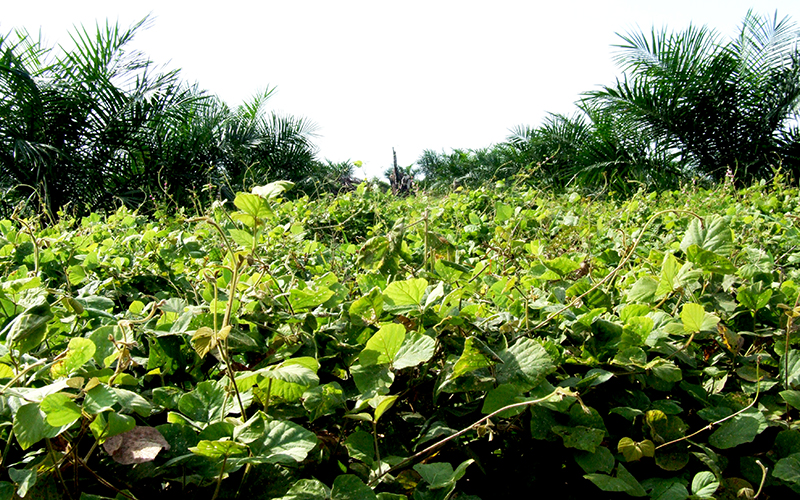
Well-established legume cover crop in immature oil palm to improve soil fertility.
3. Application of EFB as mulch
Applying EFB in immature and mature oil palms is standard practice to conserve soil and increase soil organic matter. As EFBs are rich in plant nutrients, the application would minimise using inorganic fertilisers. However, there is a risk that EFB may not be readily available to plantations and smallholders if it is used as a feedstock for generating renewable energy and biomaterials. MPOC estimated that the 416 palm oil mills in Malaysia could produce about 19.8 million tonnes (based on fresh weight) of EFB annually as feedstock for biofuel and renewable energy generation. Based on the nutrient content of EFB, 19.8 million tonnes of EFB could supply an equivalent of 138,600 tonnes of urea, 55,440 tonnes of rock phosphate,382,140 tonnes of muriate of potash and 87,120 tonnes of kieserite per year. These fertilisers will be lost if the available EFB is used as biomass feedstock to generate renewable energy. In the long run, it may be more prudent and beneficial to keep using EFB within the oil palm circular economy rather than burning it to produce renewable energy.
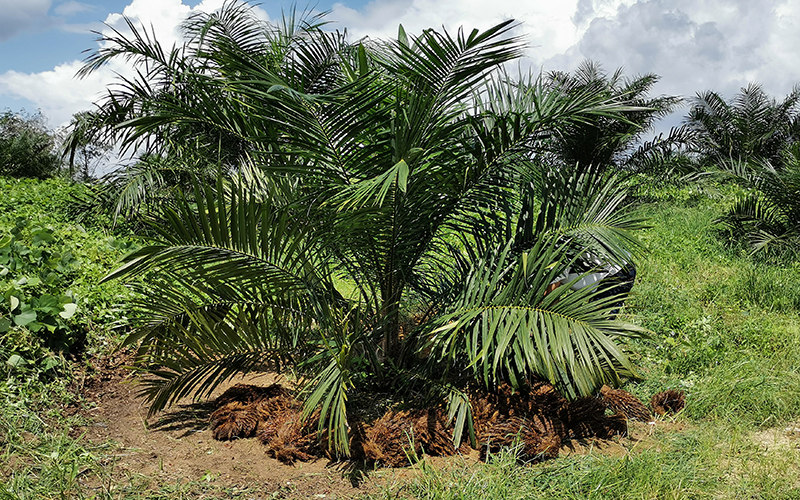
Empty fruit bunches (EFB) can be used as organic fertiliser and mulch.
4. Integration with livestock
Integration with livestock in cropping systems is one of the tenets of regenerative agriculture, and it is a recommended practice wherever feasible or possible. Rearing of livestock, especially cattle, is not a new concept and has been promoted for smallholders in Malaysia since the 1980s. Supported by MPOB, this practice controls weeds, enhances soil fertility through organic inputs, and contributes to the diversification of smallholder incomes. The synergy between oil palm cultivation and livestock rearing represents a holistic approach towards agricultural sustainability, addressing multiple United Nations Sustainable Development Goals (SDGs) when implemented as a silvopastoral practice.
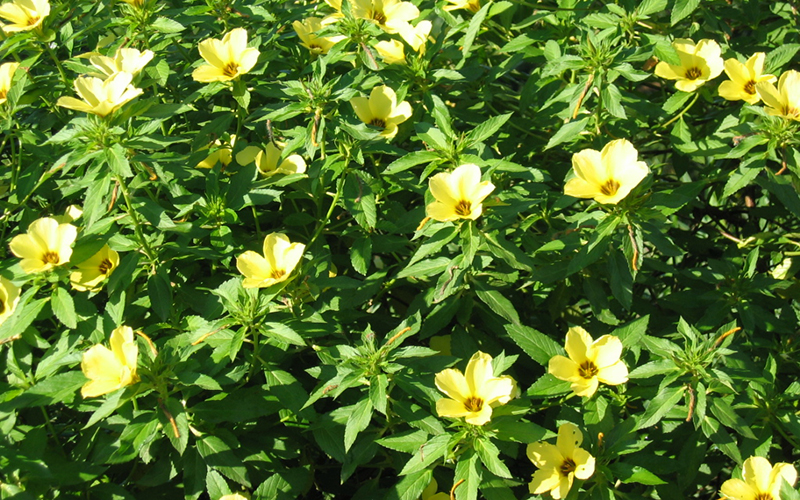
Planting beneficial plants to augment the population of natural predators of oil palm leaf-eating pests – a regenerative agriculture practice.
Adopting regenerative agriculture practices may be complex and require collaboration among all stakeholders, but the potential rewards for the environment, the community, and the industry are significant. Considering the overlap in agricultural management practices, sustainable and regenerative agriculture should be considered complementary systems, not mutually exclusive.
References
- C. H. Teoh (2024). The Planter, Kuala Lumpur, 100 (1175): 75-88 (Retrieved from https://doi.org/)
- C. H. Teoh (2024). My Say, The Edge Malaysia- Week of March-March 31, 2024 (page 46) https://www.theedgemalaysia.com
- Author: C. H. Teoh was the Senior Advisor of Solidaridad Network Asia





